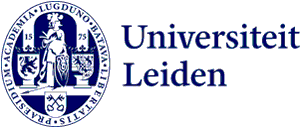
How polluting buildings and machinery make rich countries ever richer
Rich countries are getting richer because of environmentally polluting (construction) investments from the past, largely at the expense of poor countries. This was shown by long-term economic and environmental data. 'The gap between poor and rich countries is widening.' Scientists from the Leiden Institute of Environmental Sciences (CML) and international colleagues published their research on this in PNAS on June 5, 2023.
A striking feature of human society is an unprecedented increase in manufactured capital: buildings, vehicles, machines, and software. Producing, using, and maintaining all this caused – and still causes – a substantial environmental footprint. We often mistakenly think that greenhouse gas emissions and resource use come primarily from short-term consumption. This new research shows otherwise, and how the course of events continues to increase inequality around the world.
The first author of the study is Ranran Wang, assistant professor at the Leiden-based CML. She calculated the greenhouse gas emissions and various material extractions involved in building and producing all the manufactured capital since 1970 and was still in use in 2019:
- 254 gigatons of CO2 equivalents
- 31 gigatonnes of iron ore
- 24 gigatonnes of copper ore
- 507 gigatonnes of non-metallic minerals
- 23 gigatonnes of wood
650 million (healthy) years of life
The researchers introduce the Legacy Environmental Footprint (LEF), as it were, the historically accumulated environmental footprint from building up manufactured capital. Next to greenhouse gas emissions and material use this LEF also implies the human health impacts. This is measured in DALYs (Disability Adjusted Life Years): the number of years people lose due to early mortality or morbidity and the years they live with reduced health. The global manufactured capital in 2019 costed 650 million of these DALYs, especially among people who were involved in the extraction and processing of all those materials or who developed symptoms from such things as particulate matter.
Poor countries pay a double price
Remarkably, many capital stocks of rich countries were built using resources from mainly poor countries. This is particularly true of metal ores. ‘Unfortunately, these less developed economies receive a disproportionately small share of the economic benefits,’ Wang writes. She and her colleagues found that 59% of the copper ore footprint and 46% of the iron ore footprint of the current manufactured capital in 33 most developed economies comes from developing countries.
Developing countries receive a one-time relatively low price for all those materials they supply, while they are paying high social, environmental and health costs to extract them in mines. The worldwide cost in healthy life years (DALYs) lies mainly in these countries. They thus pay a double price for increasing wealth in rich countries.
Capital is still accumulating in rich countries
The Norwegian Professor of Industrial Ecology Edgar Hertwich, the co-corresponding author of the article, writes: ‘Today, capital is still accumulating in rich countries, including China. The gap to poor countries keeps growing. Sustainable development requires investment in poor countries, which has to rely on resources. We in the rich world will have to use more of our own resources, including reuse and recycling of materials present in our current capital stock, to maintain our productive capacity.'
Wang: 'With this research, we are taking a crucial first step to include the lifetime of capital stock in environmental impact assessments. This will provide valuable insights for investment decisions. I hope this research inspires policymakers to take a more sustainable and fair approach to capital accumulation.'
Text: Rianne Lindhout
Image: Pixabay
